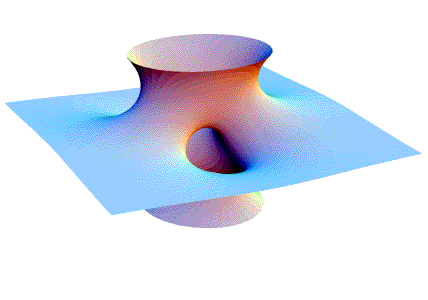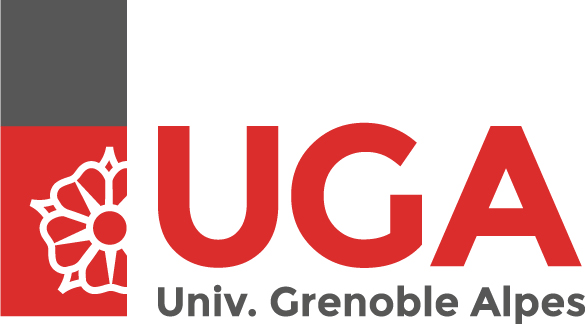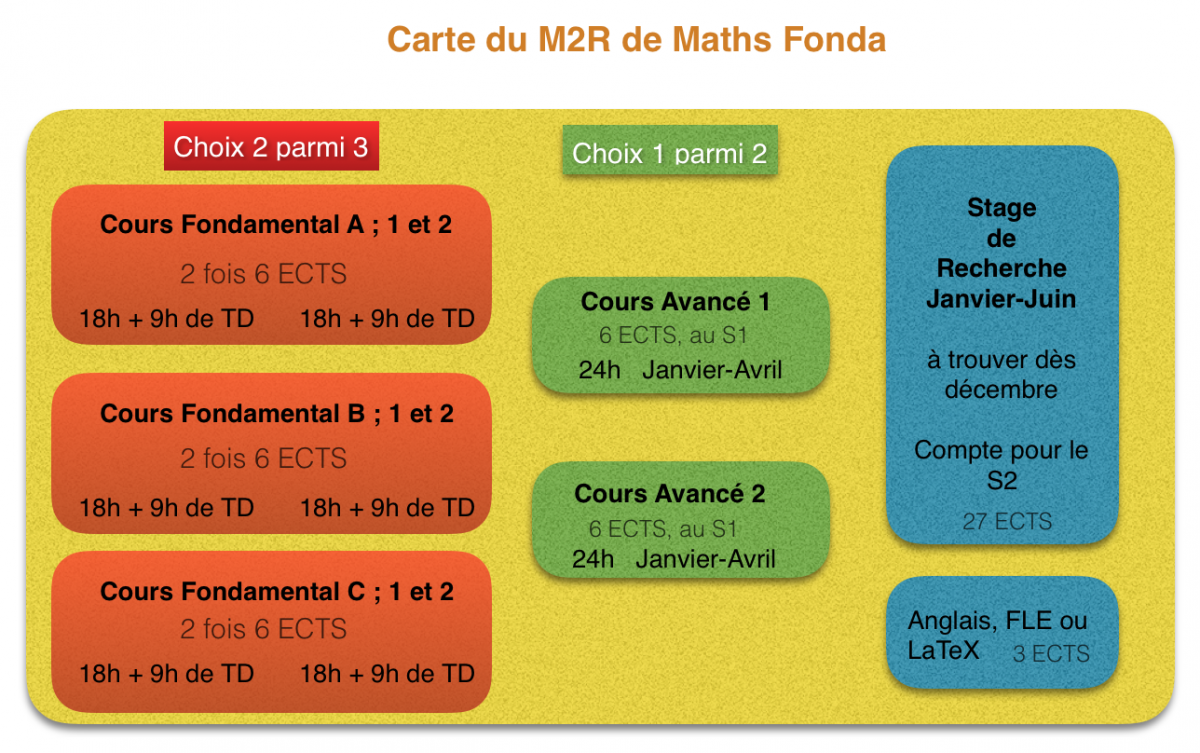DETAILED PROGRAM HERE
Geometry is a vast branch of mathematics concerned with questions of shape, size, and the properties of space. Differential geometry, in particular, uses techniques of calculus and linear algebra to study problems in geometry. It studies the structure of differentiable manifolds which, roughly speaking, formalize the concept of curve to higher dimension. This year our M2R focuses on several contemporary subfields of geometry.
A first fundamental course is devoted to the classical topic of Riemannian geometry. This is the branch of differential geometry that studies manifolds endowed with local notions of angle, length of curves, surface area and volume. A particular emphasis is given to the interactions with the theory of optimal transportation and curvature bounds.
Adding constraints on the admissible curves leads to sub-Riemannian geometry, the second fundamental course of the M2R. Its typical problems are tackled also with techniques coming from optimal control theory.
The third fundamental course is devoted to contact and symplectic geometry, and in particular to their interaction with differential topology. Both symplectic and contact geometry are motivated by the mathematical formalism of classical mechanics, where one can consider either the even-dimensional phase space of a mechanical system or the odd-dimensional constant-energy hypersurface.
The second part of the M2R consists in advanced courses.
The first one is devoted to geometric analysis, a mathematical discipline at the interface of differential geometry and differential equations. A particular emphasis is given to heat equation on Riemannian manifolds and Lie groups, and the interaction between the the analytic properties of its solutions and the geometrical properties of the manifold.
The second one is a course in random geometry. This course has a probabilistic flavor, and applies techniques coming from topology and Riemannian geometry to study the average properties of the zero locus of random real polynomials (such as its size, shape and measure).
A third possible advanced course is an introduction to mathematical general relativity and in particular to the Einstein equations on which the whole theory is based. Solutions of the Einstein equations are 4 dimensional Lorentzian manifolds. We will discuss the local theory of the Einstein equations as well as some particular solutions describing black holes.
DETAILED PROGRAM HERE
Fundamental courses
(September to December with the final exam in the first half of January):
- Riemannian geometry and optimal transportation (H. Pajot) (12 ECTS, about 5 hours/week)
- Sub-Riemannian geometry and optimal control theory (G. Charlot, L. Rizzi) (12 ECTS, 54H, 5 hours/week)
- Introduction to contact and symplectic geometry (S. Courte, S. Guillermou) (12 ECTS, 54H, 5 hours/week)
Advanced courses:
- Geometric analysis on Riemannian manifolds and Lie groups (E. Russ) (6 ECTS, 24H)
- Random Geometry (D. Gayet) (6 ECTS, 24H)
Supplementary possible courses (if approved):
- Introduction to Mathematical General Relativity (D. Hafner) (6 ECTS)
Foundamental courses begins in september and finish in December with a final exam in the first half of January. Every fundamental course counts 24 hours of théory and 36 hours of exercises (this may change according to the teachers). Globally this takes about 5 hours per week. Usually, the weekly hours of each foundamental course take all place in the same day.
Advanced courses will begin in January, immediately after the exams of the foundamental courses. They require about 2 or 3 months (according to the teachers).
The stage also begins just after the exams of January and it finishes 5 months later in the middle of June.
Note : Students may replace one of these courses with another of a different Master 2 (this needs no timetable conflict and approval by the administration). See for instance the pages of MSIAM's Master 2 degree and Lyon's Master 2 degree.


